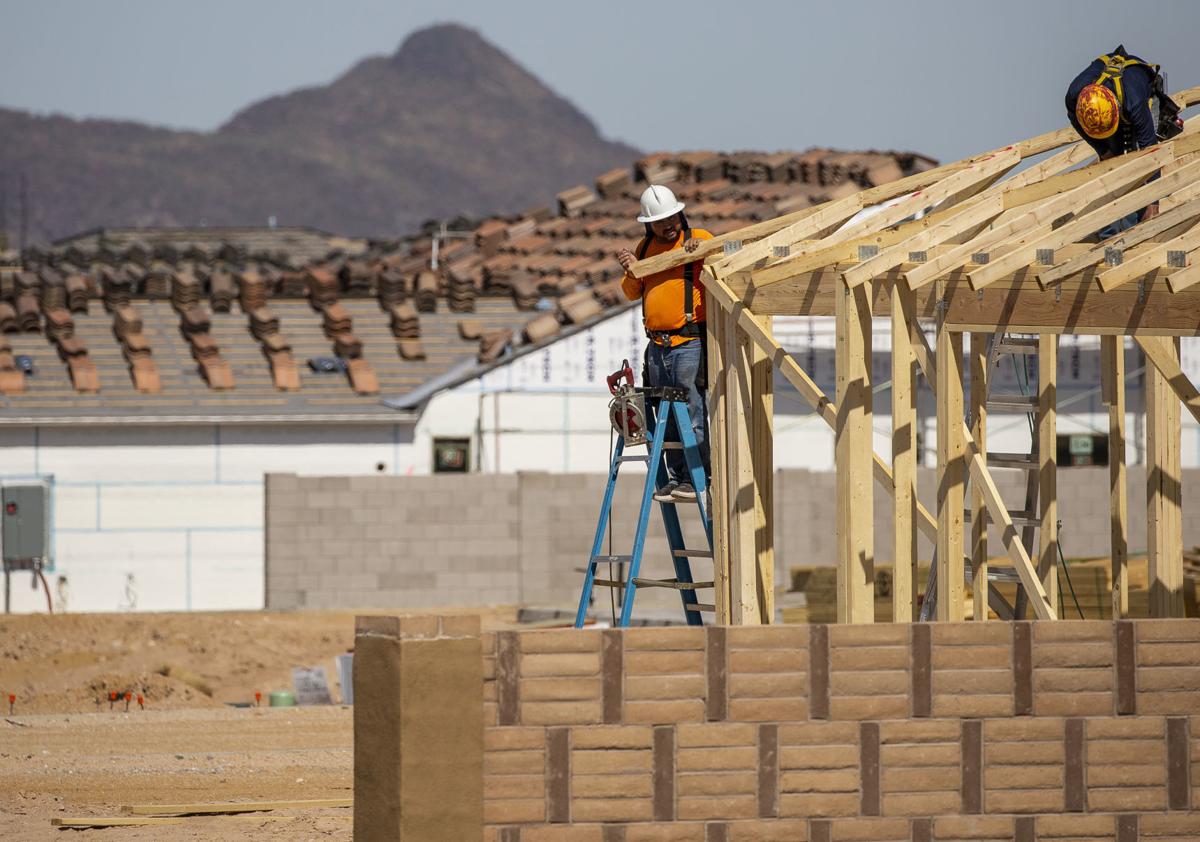PHOENIX — New home buyers are entitled to sue builders for hidden defects for up to eight years — even if they have signed contracts waiving that right, the Arizona Supreme Court ruled Wednesday.
In a ruling with wide implications, the justices said that the common law “implied warranty of workmanship and habitability” recognizes the fact that home buyers are not experts in all the things that are required in constructing a house.
“A homebuyer must ... rely heavily on the builder-vendor’s knowledge of construction quality, as builders are skilled in the profession, modern construction is complex and regulated by many government codes,” wrote Justice Ann Scott Timmer. “And homebuyers are generally not skilled or knowledgeable in construction, plumbing, or electrical requirements and practices.”
She acknowledged that, in general, people are legally entitled to sign contracts defining the responsibilities of each. That presumes both parties are “sophisticated” and equally aware of the risks and terms.
But in cases of new homes, Timmer said, there is an “inequality in bargaining power” between the builder and the buyer.
“The implied warranty was created in recognition of this disparity, and undoubtedly reflects the homebuyers’ reasonable expectations that a newly constructed home would be properly designed and built,” she wrote.
Wednesday’s ruling was not unanimous. Justice Kathryn King said it runs afoul of the state’s public policy favoring freedom to contract.
And King, joined by Justice Clint Bolick, pointed out that right of implied habitability exists nowhere in state law. Instead, she noted, it was created by a 1979 ruling of the State Court of Appeals.
Timmer said that’s irrelevant, noting subsequent state laws have implicitly affirmed that decision.
The case involves Tina Zambrano who in 2013 entered into a preprinted purchase agreement with M & RC II LLC, to buy a home that Scott Homes Development Co. would build in a new subdivision in Surprise.
That contract said the warranty offered by the builder was “the only warranty applicable” to the purchase. It said all other express or implied warranties, including of habitability and workmanship are waived by the seller.
Zambrano initialed the paragraph confirming she had read and understood the agreement.
That warranty had specific provisions, like saying Scott would repair within one year any floors having more than a quarter-inch ridge or depression within 30 inches of the joists.
Four years later, Zambrano sued alleging various design and construction defects. These included improper grading, separation of windows from cracking stucco, separation of baseboards from the tile and walls, and nail pops in the ceiling.
A trial judge granted the company’s request to throw out the lawsuit. Wednesday’s ruling says that was wrong, sending the case back to court to allow Zambrano to pursue her claim.
“The freedom to contact has long been considered a paramount public policy under common law that courts do not lightly infringe,’’ Timmer wrote. “But courts will refuse to enforce a contract term ... when an identifiable public policy clearly outweighs enforcement.’’
That public policy, she said, goes back to 1979 when the state Court of Appeals eliminated what she described as the “buyer beware’’ philosophy of new home purchases, replacing it with the implied warranty of workmanship and habitability.
“The warranty is limited to latent defects that are undiscoverable by a reasonable pre-purchase inspection and service to protect innocent purchasers and hold home builders accountable for their work,” Timmer said.
On the other side of the issue, the justice said, is “diminished interest” in enforcing waivers of the implied warranty like the one at issue here.
“Modern homebuilding frequently occurs in large-scale developments, leaving the buyer to either purchase the home under terms directed by the builder-vendor or forego the purchase altogether,” Timmer said. And in this case, she said, Zambrano signed the purchase agreement and accepted the warranty terms “with no variation to the preprinted terms in either document, without representation, and without any negotiation about warranties, suggesting she was in a take-it-or-leave-it situation.”
Also weighing in favor of the implied warranty, Timmer said, are the “multiple ways” it protects buyers.
“Warranting that a home was built using minimum standards of good workmanship conforms to a homebuyer’s reasonable expectations,’’ she said. And Timmer said it “discourages the unscrupulous fly-by-night operator and purveyor of shoddy work who might otherwise blight our communities.”
What is also does, she said, is protects subsequent buyers, as implied warranties run eight years after construction.
And then there’s the fact that a warranty “shields a purchase that is usually the most important and expensive purchase of a lifetime, this minimizing the risk of catastrophic financial losses for all homebuyers who purchase a home within eight years of construction.”
Timmer acknowledged that an unhappy purchaser can file a complaint against a builder’s license with the registrar of contractors and potentially get money from a recovery fund. But she said this is no substitute for enforcing the implied warrant, noting recovery fund payments are capped at $30,000 and do not reimburse for other consequential damages.
And Timmer pointed out those who buy older homes have an opportunity to determine how it has “withstood the passage of time,” something not available to new home buyers.





